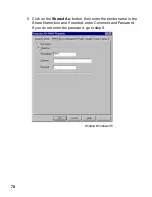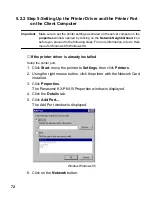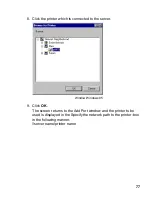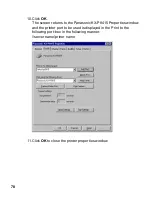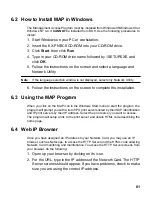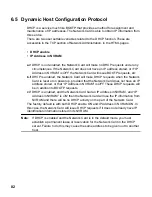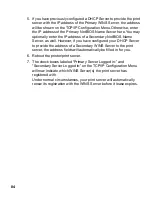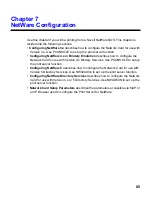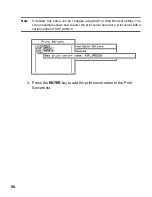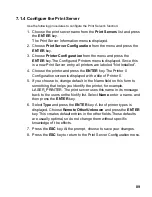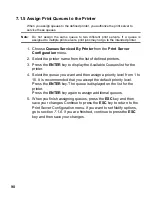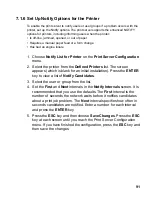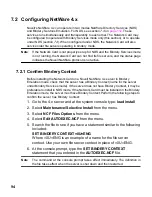
82
6.5 Dynamic Host Configuration Protocol
DHCP is a service much like BOOTP that provides a method for assignment and
maintenance of IP addresses. The Network Card is able to obtain IP information from
this service.
There are two user settable variables related to the DHCP function. These are
accessible in the TCP section of Network Administration, in the HTML pages.
• DHCP enable
• IP Address in NVRAM
a.If DHCP is
not enabled, the Network Card will make no DHCP requests under any
circumstances. If the Network Card does not have an IP address stored, or if “IP
Address in NVRAM” is
OFF, the Network Card will issue BOOTP requests, etc.
b.If DHCP is
enabled, the Network Card will make DHCP requests when the Network
Card is reset or on power up, provided that the Network Card does not have an IP
address stored, or that “IP Address in NVRAM” is
OFF. These DHCP requests will
be in addition to BOOTP requests.
c.If DHCP is
enabled, and the Network Card had an IP address in NVRAM, and “IP
Address in NVRAM” is
ON, then the Network Card will use the IP information from
NVRAM and there will be no DHCP activity on the part of the Network Card.
The factory default is with both DHCP enable ON and IP Address in NVRAM ON. In
this case, the Network Card will issue DHCP requests if it does not already have IP
identification information stored in its NVRAM.
Note:
If DHCP is enabled and the Network Card is in the default mode, you must
establish a permanent lease or reservation for the Network Card in the DHCP
server. Failure to do this may cause the same address to be given out to another
host.



